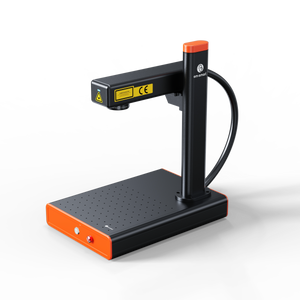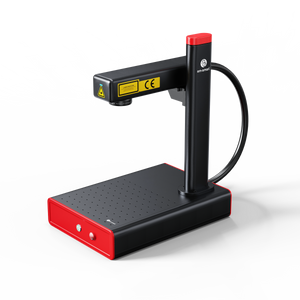A blank coin, once engraved, becomes something truly special. It can transform from a simple object into a personal gift, a keepsake, or even a small piece of art. That’s the magic of laser engraving.
Unlike traditional hand engraving, laser engraving doesn’t require years of practice or advanced skills. With a compact desktop laser engraver machine, you can turn a blank coin into a unique creation in minutes. This makes coin engraving a popular starting point for beginners and hobbyists.
Common Laser Engraved Coin Types
Laser engraved coins can tell stories, express creativity, and celebrate culture. Here are the most popular types:
1. Commemorative Coins
Used to mark special events like weddings, graduations, or anniversaries. A coin can carry lasting memories.

2. Souvenir Coins

3. Decision Coins

4. Gift Coins

5. Keychains & Pet Tags
Blank Coins for Laser Engraving
The material determines the engraving result, durability, and overall feel of the coin. Here are the most common options:

1. Copper
2. Brass
Gold-like look, harder than copper, produces sharp, deep engravings. Widely used for commemorative coins and medals. Excellent for heavy, bold designs.
3. Aluminum
Lightweight, affordable, often anodized. Engraving reveals a bright silver contrast—ideal for text and logos. Great for promo coins but not for deep engraving.
4. Stainless Steel
Durable, corrosion-resistant, with a sleek silver-gray surface. Fiber lasers create crisp black marks. Perfect for pet tags, outdoor tokens, and long-lasting pieces.
5. Black-Plated Coins
Coated with a black finish. Laser removes the top layer, exposing the shiny metal beneath, creating a strong black-and-silver contrast. Very beginner-friendly and visually striking.
Hand Engraving vs. Laser Engraving
Both methods create stunning designs, but the process and results differ:
- Hand Engraving requires skill, patience, and hours of work. It gives coins a tactile, handmade charm, with unique depth and character—but it’s not practical for large-scale or commercial projects.
- Laser Engraving is computer-controlled, fast, and highly precise. It handles complex patterns easily and produces consistent results. As noted by CNCSourced, laser engraving is faster, more accurate, and much simpler to operate.
Hand engraving still shines in deep reliefs or irregular surfaces, but for most personalized or batch production, laser engraving is the go-to choice.
How to Engrave a Coin
Laser engraving coins offers precision and detail, but it’s important to follow the right steps for optimal results. Below are the detailed methods for fine engraving, deep engraving, and color engraving:
1. Fine Engraving (Ideal for text, logos, and delicate designs)
Preparation:
- Use vector files (AI, SVG, DXF) for sharp, clear lines, keeping details above 0.1mm. Avoid overly complex gradients—use outlines or strokes instead.
- Clean the coin surface using alcohol to remove dirt and oil, and fix the coin securely with clamps.
Machine Settings (For a 20W fiber laser):
- Power: 60-80% (Low power for a smooth finish)
- Speed: 1000–1500 mm/s
- Frequency: 20 kHz
Engraving Process:
- Preview the engraving area with the red light function. Test on a scrap piece first, then proceed with engraving.
Post-Processing:
- Lightly polish the coin to remove any residue. If it’s copper or brass, consider applying a transparent protective coating to prevent oxidation.
2. Deep Engraving (For 3D effects and bold designs)
Preparation:
- Use clear vector designs and convert grayscale images into layers. Adjust the fill density for different engraving depths.
- Ensure the coin is firmly fixed to avoid movement during the engraving process.
Machine Settings (For a 20W fiber laser):
- Power: 50–90%
- Speed: 800–1000 mm/s (Slower speeds give deeper engravings)
- Frequency: 20–40 kHz
Engraving Process:
Start with a low power test, then gradually increase the depth with each pass. Clean off debris after every few passes. Use cross-filling (rotating the coin 90° each time) to ensure even engraving.
Post-Processing:
Enhance contrast with polishing or sandblasting. You can also fill the engraved areas with black paint to make the details stand out more.
3. Color Laser Engraving (Ideal for multicolor effects on stainless steel)
Preparation:
- Keep the design simple and bold. Fine details may blur when using color engraving due to the heat and oxidation process.
- Polished stainless steel works best for showcasing color contrasts.
Machine Settings (For MOPA fiber laser):
- Power: 20–50%
- Speed: 800–1500 mm/s
- Frequency: 60–300 kHz
- Pulse Width: Adjustable (Longer pulse width gives warmer tones, shorter gives cooler tones)
Engraving Process:
Start by testing the material on scrap metal to find the ideal color range. Keep a steady speed and avoid overlapping areas to maintain clean color transitions.
Post-Processing:
Since the color is part of the natural oxidation layer, no paint is needed. Just add a transparent protective coat to prevent scratches.
Legal Considerations
Engraving coins for art or personalized use is generally legal. However, there are important guidelines to follow:
- Legal Uses: Engraving coins as art, gifts, or souvenirs is typically fine, as long as it's not for counterfeiting currency or creating fraudulent tokens that could be used in vending machines.
- Avoid Counterfeit Concerns: If the design resembles real currency or could be confused with legal tender, it may violate laws. Always ensure your designs are clearly artistic or commemorative.
Conclusion
Laser engraved coins combines art and technology, providing a low-entry barrier for creative expression and business opportunities. From choosing the right materials to understanding engraving techniques, there’s so much to explore in this field.
Whether you want to create unique pet tags or start a custom gift shop, laser engraving offers endless possibilities.



